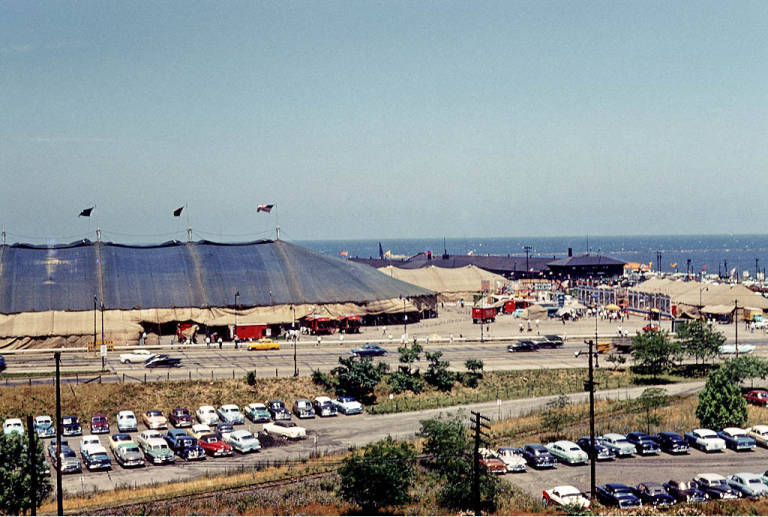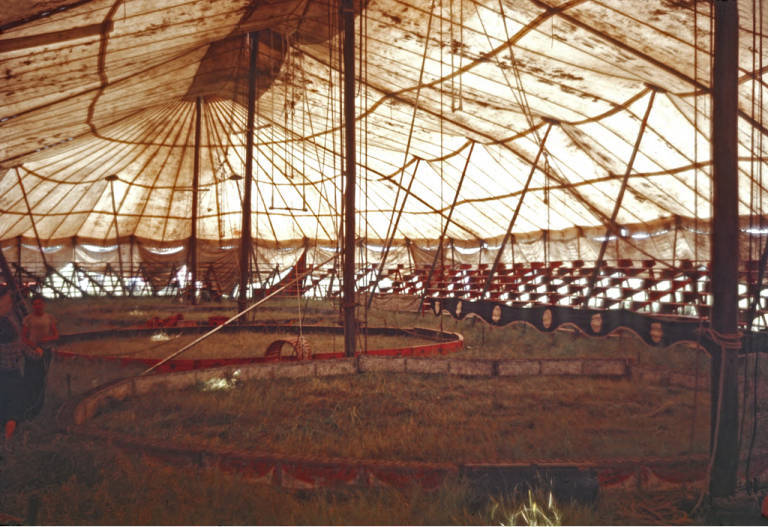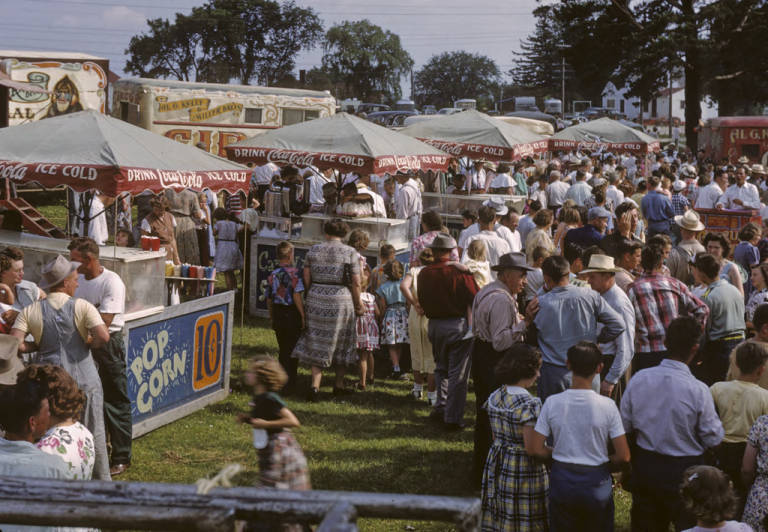20th Century Circuses in Illinois: Tents and Rings
Some historians pinpoint 1830 as the year that the iconic circus tent was first used. In that year, Aaron Turner, an influential figure in American circus history, began to present his show beneath an enormous round tent, which was reportedly 90 feet (approximately 27.4 meters) across. The round tent, or “big top,” has since become a recognizable part of the circus aesthetic. Additionally, the circus rings (the large, circular performance areas) were first pioneered in American circuses in the 1880s by the Barnum and Bailey Circus. These two innovations set the stage—literally—for American circus performances for decades to come.
The earliest circus tents, used in English circuses, were actually square, and were stationary. Because of this, circus owners tended to incorporate more decorative elements to the setup. Statues and colorful paint were often employed to give the circus an attractive look. In the United States, however, the towns were smaller and there were more of them—thus, the moveable circus became the typical model.
Circus Lot Panorama. Sverre O. Braathen, photographer. July 12, 1955. Illinois State University.
The traveling circus, which set up its tents in towns large and small, allowed regular people from all walks of life to see the show. While people may have travelled if the circus had set up in a big city and stayed put, the circus was able to reach more audiences by essentially travelling to the audience's backyard.
Circus Trucks on Lot. Sverre O. Braathen, photographer. 1950. Illinois State University.
This image shows the view inside the big top. Circus historians trace the earliest performance rings (before the three-ring setup) to the time of riding schools, or shows featuring horses and riders. According to historian George Speaight (quoted in Kotar and Gessler), an English riding school began performing in a ring in 1754, which was dubbed “The Circus” by its builder, John Wood.
Inside the Big Top. Sverre O. Braathen, photographer. 1944. Illinois State University.
“Top,” in circus slang, simply meant “tent.” While the “big top” housed the circus’s main performances, other tents, like the “candy top” or “animal top,” held other attractions. In addition to the tents was the midway, an assortment of sideshows and vendors which attracted the attention of guests along their way to the big top.
Midway and Concession Stands. Sverre O. Braathen, photographer. 1951. Illinois State University.




